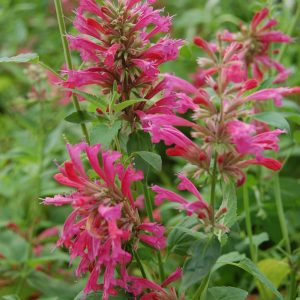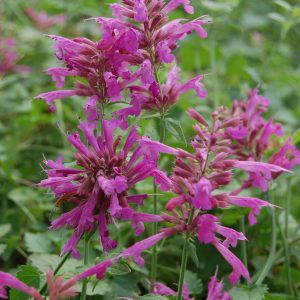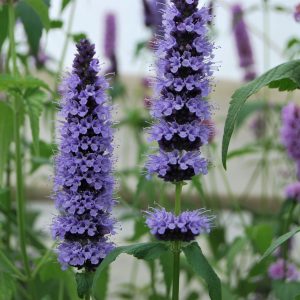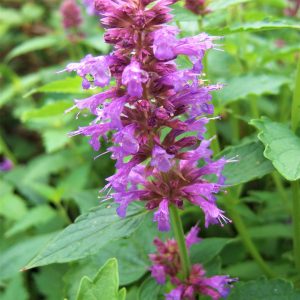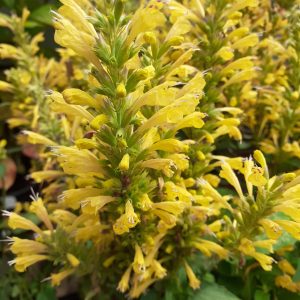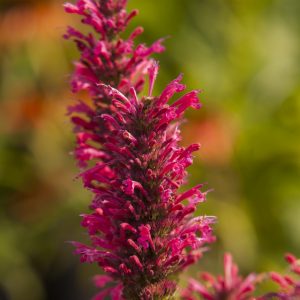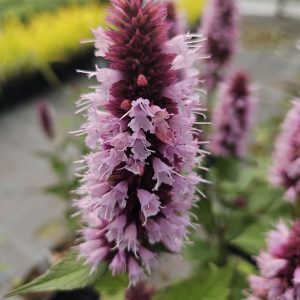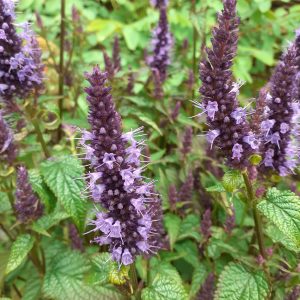Agastache, commonly known as hyssop or hummingbird mint, is a delightful perennial known for its aromatic foliage and spikes of tubular flowers that attract pollinators. Follow this comprehensive planting guide to ensure the successful establishment and flourishing growth of your Agastache plants.
Choosing the Right Location
Sunlight Requirements: Plant Agastache in a location that receives full sun to partial shade. These plants thrive in sunny conditions and well-drained soil.
Soil Conditions: Agastache prefers well-drained soil with a slightly acidic to neutral pH. Amending heavy soils with organic matter enhances drainage.
Planting Time: Optimal Timing: Plant Agastache in the spring or Autumn. This allows the plant to establish a robust root system before facing extreme temperatures.
Planting Process
Digging Holes: Dig holes that are slightly larger than the root ball of the Agastache plant.
Spacing: Plant multiple Agastache plants approximately 18 to 24 inches apart to allow for proper air circulation.
Plant Depth: Place the plant in the hole at the same depth it was in the container or nursery. Backfill with soil and water thoroughly.
Watering
Establishment Period: Water deeply immediately after planting to help the roots settle. Keep the soil consistently moist during the first growing season.
Mature Plants: Once established, Agastache is drought tolerant. Water when the soil surface feels dry, providing deep, infrequent watering.
Mulching
Mulch Benefits: Apply a layer of organic mulch around the plants to retain soil moisture, suppress weeds, and regulate soil temperature.
Mulch Depth: Maintain a 2-3 inch layer of mulch, but avoid piling it against the base of the plant.
Fertilisation
Moderate Fertilisation: Agastache generally thrives in average soil and doesn’t require heavy fertilisation. Applying a balanced, slow-release fertiliser in the spring is usually sufficient.
Avoid Excessive Nitrogen: Limit high-nitrogen fertilisers to prevent excessive foliage growth at the expense of flowering.
Pruning
Regular Deadheading: Remove spent flowers regularly to encourage continuous blooming and prevent self-seeding.
Autumn Clean up: Trim back the foliage in late Autumn or early spring to maintain a tidy appearance and promote new growth.
Pest and Disease Management
Pest Resistance: Agastache is relatively resistant to pests. Keep an eye out for aphids and treat them promptly if detected.
Good Air Circulation: Plant with proper spacing to encourage good air circulation and minimise the risk of fungal diseases.
Division
Periodic Division: Every 2-3 years, consider dividing mature Agastache plants to maintain vigour. Spring or Autumn is the best time for division.
Replanting: Lift the clumps, divide them, and replant healthy sections in well-prepared soil.
By following these guidelines, you’ll establish a healthy and vibrant Agastache garden. Adjust care based on your specific growing conditions and enjoy the beauty and fragrance that these plants bring to your landscape.



